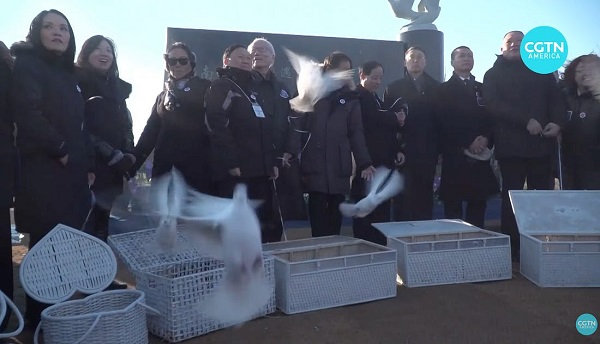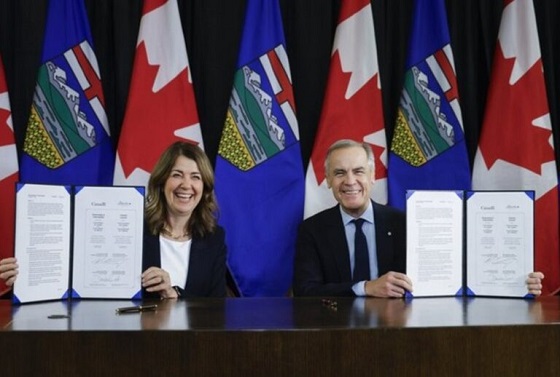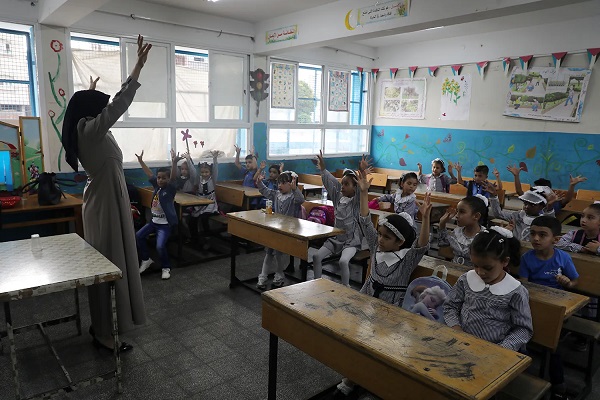David Clinton
What Happens When Ministries Go Rogue?

Global Affairs Canada and the strange, wonderful world only they can see
This is an older (and longer) version of an article just published by the Macdonald-Laurier Institute.
Some may think of the people behind Global Affairs Canada (GAC – also known as Department of Foreign Affairs) as Canada’s brightest and best, executing a sophisticated and far-seeing foreign policy. They may be right. But the description that more readily comes to my mind is “completely out of control.” I may be wrong.
But if I am wrong, I’m not the only one. Vivian Bercovici – a former Canadian ambassador to Israel – quoted former Prime Minister Harper as saying “that in his 10 years in office, the most difficult department for his government to work with was Foreign Affairs.”
The Audit is a reader-supported publication. To receive new posts and support my work, consider becoming a free or paid subscriber.
What is it about GAC, and Western foreign services in general, that makes them so subversive? Bercovici puts it this way:
“In the postwar years, foreign-affairs bureaucracies in Western democracies ballooned in size. Foreign-service officers saw themselves as better-informed and -trained to manage diplomatic complexities than the elected officials they supposedly served. They also mastered the art of diffusing responsibility and outcomes among the many layers and offices engaged in any particular issue. As a practical matter, this means that neither success nor failure is attributed to individuals, resulting in a lack of accountability throughout the organization. It also means that internal sabotage of the will of government is more easily effected and concealed. Where authority and responsibility are blurred, accountability is impossible.”
All that’s well above my pay grade. But I’m perfectly capable of observing the work GAC actually does. So I’m going to discuss three specific GAC programs that seem to present some unhealthy processes and patterns. Perhaps they’ll help us reach useful conclusions.

GAC and the Global Fund
According to GAC’s Project Browser tool, between 2008 and 2022 Canada committed $3.065 billion to the Global Fund to Fight AIDS, Tuberculosis and Malaria. Which on the face of it is great. No one here is cheering for Team Malaria, right? But we should ask a couple of questions:
- Is the scale of the support appropriate given financial constraints back home?
- Was that money well spent?
I’m not going to even try to answer the first question: that’s something for Canadians to talk about as a society. For context though, GAC’s total annual budget for foreign aid funding seems to be in the neighborhood of $16 billion (of which around $2 billion goes to United Nations agencies). $16 billion would represent roughly 4 percent of total annual federal government expenditures.
However I do have a lot to say about question number two. First of all, the Global Fund to Fight AIDS, Tuberculosis and Malaria has been dogged by serious accusations of corruption and lack of transparency for more than a decade. That means there’s a good chance a substantial proportion of our money ended up moving through private Caribbean bank accounts on its way to cozy dachas in Sochi.
But I’m going to ignore that for now because we can’t be sure the funny business is still happening. And because if we canceled all government programs that were at risk of misuse we’d have to lay off the entire federal civil service. Which would be a very bad thing, because…well it just would.
Instead, I’ll focus on measuring the impact of our investment. What were the goals GAC set for its Global Fund contribution? Their own website fills us in:
“The expected results are defined by the “Global Fund Strategy 2017-2022”. This strategy includes the following targets, to be achieved by 2020: (1) 90% of persons living with HIV (PLHIV) know their status, 90% PLHIV who know their status and receiving treatment; and 90% of people on treatment have suppressed viral loads; (2) a 20% and 35% decline in TB incidence rate and TB deaths respectively, compared with 2015; and (3) at least a 40% reduction in malaria mortality rates and malaria case incidence, compared with 2015.”
The GAC planners obviously felt that spending $3 billion over five years or so was reasonable as long as, between 2015 and 2020, it contributed to a 35 percent decline in TB deaths, a 40 percent decline in malaria deaths, and the 90%-90%-90% formula for people with HIV. And I’ll admit that it’s a compelling argument.
The thing is though, that no one could have known whether we’d actually achieve those results. And given the built-in ambiguity of the program’s goals, it’s not we could ever know whether it was a success. The decision therefore was a gamble. And the table stakes were $3 billion belonging to Canadian taxpayers.
Should nameless, unelected planners have that much power over our money? Assuming that they’re genuine domain experts, then sure. Who else is better? But:
With great power comes great responsibility. (Nietzsche? Kant? Aristotle? Nope. Spiderman’s uncle)
Claiming to possess domain expertise isn’t free: if you break it, you own it. So if death rates happily fell during the program years then the planners should be rewarded for their service to humanity. But if they didn’t fall, or if they didn’t fall as much as predicted then, at the very least, people should lose their jobs.
Fortunately, with the hindsight allowed us by historical data, we can easily see how things worked out. Unfortunately, it looks like the fine folk at GAC stepped on a rake.
Our World in Data numbers give us a pretty good picture of how things played out in the real world. Tragically, Malaria killed 562,000 people in 2015 and 627,000 in 2020. That’s a jump of 11.6 percent as opposed to the 40 percent decline that was expected. According to the WHO, there were 1.6 million tuberculosis victims in 2015 against 1.2 million in 2023. That’s a 24.7 percent drop – impressive, but not quite the required 35 per cent.
I couldn’t quickly find the precise HIV data mentioned in the program expectations, but I did see that HIV deaths dropped by 16 percent between 2015 and 2019. So that’s a win.
But it’s clear that the conditions underlying the GAC wager were not met.
To be fair, GAC reporting in 2023 claims that: “Since 2002, (their) efforts have contributed to a significant decline in deaths caused by AIDS (‑70%), TB (‑21%) and malaria (‑26%).” – but those figures are unsourced, badly outdated, and completely fail to account for program spending subsequent to 2015.
The government gambled more than $3 billion of taxpayer funds and lost the bet. To date, they have yet to apologize, assure us that they’re busy reassessing their future commitments, or publicize their plans for the individuals who so carelessly lost our money.
For that matter, were those individuals even GAC employees? It’s possible that the decision was made by representatives of the uber-expensive contract consulting firm, McKinsey. When will that information become public?
GAC and the World Food Programme
The Global Fund deal was one bad multilateral bet. Were there others? Sure. Over the five years between 2016 and 2021 GAC entrusted a total of $125 million with the UN World Food Programme to provide emergency food aid. Africa represented 60 percent of the program’s target, and the one policy marker designated as a “significant objective” was gender equality. The programs expected results included:
- Improved access to food and nutrition assistance for food-insecure populations
- Increased ability of the World Food Programme to provide appropriate responses to humanitarian crises
Overall, the “expected ultimate outcome is the reduced vulnerability of crisis-affected people, especially women and children.” Unfortunately, here too, the numbers moved in the wrong direction. As the graph shows, numbers from Our World in Data show that the percentage of people across the African continent who lack the minimum daily caloric intake – despite years of declines – has been climbing steadily precisely through the GAC’s program timeline. Malnutrition went from 15 to 19.7 percent since 2013.
I’ll admit that I can’t be sure I’m not oversimplifying things here. There could well have been powerful geopolitical or macro economic changes behind surges in malaria and malnutrition. Perhaps those crises would have been even worse had Canadian funding not been in place. Global events seldom have easy explanations.
But what I can see is a fairly consistent pattern. GAC spends hundreds of millions and billions of dollars on multi-year agreements with multilateral organizations. Key success indicators are rarely met. Persistent rumors of corruption and incompetence (and worse) often hover above the largest aid organizations. But there’s never any evidence of comprehensive program and mandate assessments within GAC itself. They might happen, but they’re not telling us. And that’s a problem.
Note: I received no response to repeated efforts to reach GAC officials for comment on these programs.
GAC and the United Nations Relief and Works Agency
The government of Canada – through GAC – has long been among the major financial supporters of The United Nations Relief and Works Agency for Palestine Refugees in the Near East (UNRWA). Leading up to the Hamas massacre on October 7, 2023, the 75 year-old United Nations agency had a yearly budget of more than 900 million U.S. dollars, and had long been accused of antisemitism, corruption, and complicity in war crimes.
At various points long before the current war, the Netherlands, Switzerland and the Unites States had all felt compelled to suspend payments to UNRWA over related concerns. The Harper government cut funding to UNRWA in 2010, but Prime Minister Trudeau restored it in 2016. Canada briefly froze funding to UNRWA in January 2024 due to the organization’s connections to the October 7 attacks but once again restored payments in March.
I’m curious to know what the quarter billion dollars that Canada has donated to UNRWA since 2016 was used for and what safeguards the government imposed to ensure we weren’t facilitating criminal or genocidal behavior.
In fact, the official record of Canada’s parliament includes the unanimous agreement of the Standing Committee on Foreign Affairs and International Development from Thursday, February 4, 2021, when they declared:
“That the committee express its deep concern about certain educational materials circulated to students by UNRWA during the pandemic in error that violates the values of human rights, tolerance, neutrality and non-discrimination, at a time when UNRWA is receiving funding from the Government of Canada, and report this motion to the House”
It’s noteworthy that the final version of the text included the phrase “in error”. That addition was not agreed to unanimously, because it would suggest that the copious educational material openly promoting extreme nationalism and violence against Jews somehow only found its way into classrooms by some weird accident. (Someone might have left a window open and the wind blew book-filled boxes in. Could of happened to anyone.)
In the end, only the four Conservative members of the committee opposed the “in error” phrasing.
The motion was originally inspired by a report published by the Institute for Monitoring Peace and Cultural Tolerance in School Education (IMPACT-se). That report documented many instances of the glorification and promotion of violent Jihad, martyrdom, and terrorism within UNRWA educational materials.
As it turns out, it’s now clear that not only was the content created by UNRWA and included in their curricula by design, but it’s still being printed and widely taught in UNRWA schools (when they’re operational). The agency’s only practical response to the criticism was to remove references from their public-facing website.
Further research by IMPACT-se in the aftermath of the October 7 attacks has revealed how, for instance, “13 UNRWA staff members have publicly praised, celebrated or expressed their support for the unprecedented deadly assaults on civilians.” The report also documents how at least 18 UNRWA graduates have “died carrying out acts of terror.”
Of course, our concerns go far beyond education. Since the start of Israel’s land offensive in Gaza, it’s become painfully obvious that UNRWA schools and hospitals have been used as rocket launching areas, weapons storage facilities, and access points for Hamas military tunnels – all clear war crimes. It’s difficult to imagine how a reasonable person could conclude that UNRWA officials – and those providing program oversight – were not aware of those violations.
More recently, the UN itself admitted that at least nine of its employees “might have” been involved in the October 7 massacres and will be fired.
GAC – at least in its public statements – hasn’t ignored the problem. In June of 2023, they announced that:
“Canada will remain closely engaged with UNRWA and continue to exercises (sic) enhanced due diligence for all humanitarian and development assistance funding for Palestinians. This work includes ongoing oversight, regular site visits, a systematic screening process and strong anti-terrorism provisions in funding agreements.”
The problem is that subsequent credible revelations have demonstrated that the “oversight” and “regular site visits” promised by GAC either never happened, were an embarrassing failure…or something much worse.
Canadians have a right to know how their money is spent. It would be helpful if the government, and Global Affairs Canada in particular, would at the very least tell us exactly how they’re going to fix these messes.
The Audit is a reader-supported publication. To receive new posts and support my work, consider becoming a free or paid subscriber.
Invite your friends and earn rewards
Business
There’s No Bias at CBC News, You Say? Well, OK…

It’s been nearly a year since I last wrote about the CBC. In the intervening months, the Prescott memo on bias at the BBC was released, whose stunning allegations of systemic journalistic malpractice “inspired” multiple senior officials to leave the corporation. Given how the institutional bias driving problems at the BBC is undoubtedly widely shared by CBC employees, I’d be surprised if there weren’t similar flaws embedded inside the stuff we’re being fed here in Canada.
Apparently, besides receiving nearly two billion dollars¹ annually in direct and indirect government funding, CBC also employs around a third of all of Canada’s full time journalists. So taxpayers have a legitimate interest in knowing what we’re getting out of the deal.
Naturally, corporate president Marie-Philippe Bouchard has solemnly denied the existence of any bias in CBC reporting. But I’d be more comfortable seeing some evidence of that with my own eyes. Given that I personally can easily go multiple months without watching any CBC programming or even visiting their website, “my own eyes” will require some creative redefinition.
So this time around I collected the titles and descriptions from nearly 300 stories that were randomly chosen from the CBC Top Stories RSS feed from the first half of 2025. You can view the results for yourself here. I then used AI tools to analyze the data for possible bias (how events are interpreted) and agendas (which events are selected). I also looked for:
- Institutional viewpoint bias
- Public-sector framing
- Cultural-identity prioritization
- Government-source dependency
- Social-progressive emphasis
Here’s what I discovered.
Story Selection Bias
Millions of things happen every day. And many thousands of those might be of interest to Canadians. Naturally, no news publisher has the bandwidth to cover all of them, so deciding which stories to include in anyone’s Top Story feed will involve a lot of filtering. To give us a sense of what filtering standards are used at the CBC, let’s break down coverage by topic.
Of the 300 stories covered by my data, around 30 percent – month after month – focused on Donald Trump and U.S.- Canada relations. Another 12-15 percent related to Gaza and the Israel-Palestine conflict. Domestic politics – including election coverage – took up another 12 percent, Indigenous issues attracted 9 percent, climate and the environment grabbed 8 percent, and gender identity, health-care worker assaults, immigrant suffering, and crime attracted around 4 percent each.
Now here’s a partial list of significant stories from the target time frame (the first half of 2025) that weren’t meaningfully represented in my sample of CBC’s Top Stories:
- Housing affordability crisis barely appears (one of the top voter concerns in actual 2025 polls).
- Immigration levels and labour-market impact.
- Crime-rate increases or policing controversies (unless tied to Indigenous or racialized victims).
- Private-sector investment success stories.
- Any sustained positive coverage of the oil/gas sector (even when prices are high).
- Critical examination of public-sector growth or pension liabilities.
- Chinese interference or CCP influence in Canada (despite ongoing inquiries in real life).
- The rest of the known galaxy (besides Gaza and the U.S.)
Interpretation Bias
There’s an obvious pattern of favoring certain identity narratives. The Indigenous are always framed as victims of historic injustice, Palestinian and Gazan actions are overwhelmingly sympathetic, while anything done by Israelis is “aggression”. Transgender representation in uniformly affirmative while dissent is bigotry.
By contrast, stories critical of immigration policy, sympathetic to Israeli/Jewish perspectives, or skeptical of gender medicine are virtually non-existent in this sample.
That’s not to say that, in the real world, injustice doesn’t exist. It surely does. But a neutral and objective news service should be able to present important stories using a neutral and objective voice. That obviously doesn’t happen at the CBC.
Consider these obvious examples:
- “Trump claims there are only ‘2 genders.’ Historians say that’s never been true” – here’s an overt editorial contradiction in the headline itself.
- “Trump bans transgender female athletes from women’s sports” which is framed as an attack rather than a policy debate.
And your choice of wording counts more than you might realize. Verbs like “slams”, “blasts”, and “warns” are used almost exclusively describing the actions of conservative figures like Trump, Poilievre, or Danielle Smith, while “experts say”, “historians say”, and “doctors say” are repeatedly used to rebut conservative policy.
Similarly, Palestinian casualties are invariably “killed“ by Israeli forces – using the active voice – while Israeli casualties, when mentioned at all, are described using the passive voice.
Institutional Viewpoint Bias
A primary – perhaps the primary job – of a serious journalist is to challenge the government’s narrative. Because if journalists don’t even try to hold public officials to account, then no one else can. Even the valuable work of the Auditor General or the Parliamentary Budget Officer will be wasted, because there will be no one to amplify their claims of wrongdoing. And Canadians will have no way of hearing the bad news.
So it can’t be a good sign when around 62 percent of domestic political stories published by the nation’s public broadcaster either quote government (federal or provincial) sources as the primary voice, or are framed around government announcements, reports, funding promises, or inquiries.
In other words, a majority of what the CBC does involves providing stenography services for their paymasters.
Here are just a few examples:
- “Federal government apologizes for ‘profound harm’ of Dundas Harbour relocations”
- “Jordan’s Principle funding… being extended through 2026: Indigenous Services”
- “Liberal government announces dental care expansion the day before expected election call”
Agencies like the Bank of Canada, Indigenous Services Canada, and Transportation Safety Board are routinely presented as authoritative and neutral. By contrast, opposition or industry critiques are usually presented as secondary (“…but critics say”) or are simply invisible. Overall, private-sector actors like airlines, oil companies, or developers are far more likely to be criticized.
All this is classic institutional bias: the state and its agencies are the default lens through which reality is filtered.
Not unlike the horrors going on at the BBC, much of this bias is likely unconscious. I’m sure that presenting this evidence to CBC editors and managers would evoke little more than blank stares. This stuff flies way below the radar.
But as one of the AI tools I used concluded:
In short, this 2025 CBC RSS sample shows a very strong and consistent left-progressive institutional bias both in story selection (agenda) and in framing (interpretation). The outlet functions less as a neutral public broadcaster and more as an amplifier of government, public-sector, and social-progressive narratives, with particular hostility reserved for Donald Trump, Canadian conservatives, and anything that could be construed as “right-wing misinformation.”
And here’s the bottom line from a second tool:
The data reveals a consistent editorial worldview where legitimate change flows from institutions downward, identity group membership is newsworthy, and systemic intervention is the default solution framework.
You might also enjoy:
Is Updating a Few Thousand Readers Worth a Half Million Taxpayer Dollars? |
||||||
|
||||||
| Plenty has been written about the many difficulties faced by legacy news media operations. You might even recall reading about the troubled CBC and the Liberal government’s ill-fated Online News Act in these very pages. Traditional subscription and broadcast models are drying up, and on-line ad-based revenues are in sharp decline. | ||||||
|
Business
Why Does Canada “Lead” the World in Funding Racist Indoctrination?
-

 armed forces23 hours ago
armed forces23 hours agoOttawa’s Newly Released Defence Plan Crosses a Dangerous Line
-

 espionage22 hours ago
espionage22 hours agoCarney Floor Crossing Raises Counterintelligence Questions aimed at China, Former Senior Mountie Argues
-

 Health21 hours ago
Health21 hours agoAll 12 Vaccinated vs. Unvaccinated Studies Found the Same Thing: Unvaccinated Children Are Far Healthier
-

 Energy24 hours ago
Energy24 hours ago75 per cent of Canadians support the construction of new pipelines to the East Coast and British Columbia
-

 Opinion20 hours ago
Opinion20 hours agoPope Leo XIV’s Christmas night homily
-

 Energy2 days ago
Energy2 days agoThe Top News Stories That Shaped Canadian Energy in 2025 and Will Continue to Shape Canadian Energy in 2026
-

 armed forces20 hours ago
armed forces20 hours agoRemembering Afghanistan and the sacrifices of our military families
-

 Energy2 days ago
Energy2 days agoWestern Canada’s supply chain for Santa Claus
















